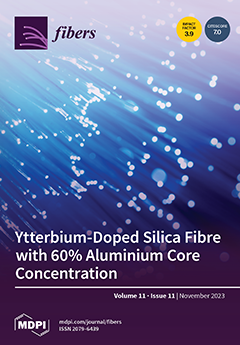M-type optical fibers in which a core is surrounded by a thin ring layer with a higher refractive index have attracted increasing attention in recent years. One of their advantageous features is the ability to operate a non-fundamental LP
02 mode possessing unusual dispersion properties, namely, a zero-dispersion wavelength (ZDW) shifted to the short wavelength region relative to the material ZDW. The LP
02 mode can be selectively excited since it is predominantly localized near the core, while the fundamental LP
01 and other higher modes are localized near the ring (for proper fiber parameters). In this paper, we present a comprehensive theoretical analysis of effective dispersion tailoring for the HE
12 mode of highly nonlinear chalcogenide glass fibers (for which the LP mode approximation fails due to large refractive index contrasts). We demonstrate fiber designs for which ZDWs can be shifted to the spectral region < 2 μm, which is of great interest for the development of mid-IR supercontinuum sources and frequency-tunable pulse sources with standard near-IR pumping. We obtained the characteristic equation and solved it numerically to find mode fields and dispersion characteristics. We show the possibility of achieving dispersion characteristics of the HE
12 mode with one, two, three, and four ZDWs in the wavelength range of 1.5–5.5 μm. We used a modified genetic algorithm (MGA) to design fibers with desired dispersion parameters. In particular, by applying an MGA, we optimized four fiber parameters and constructed a fiber for which HE
12 mode dispersion is anomalous in the 1.735–5.155 μm range.
Full article





